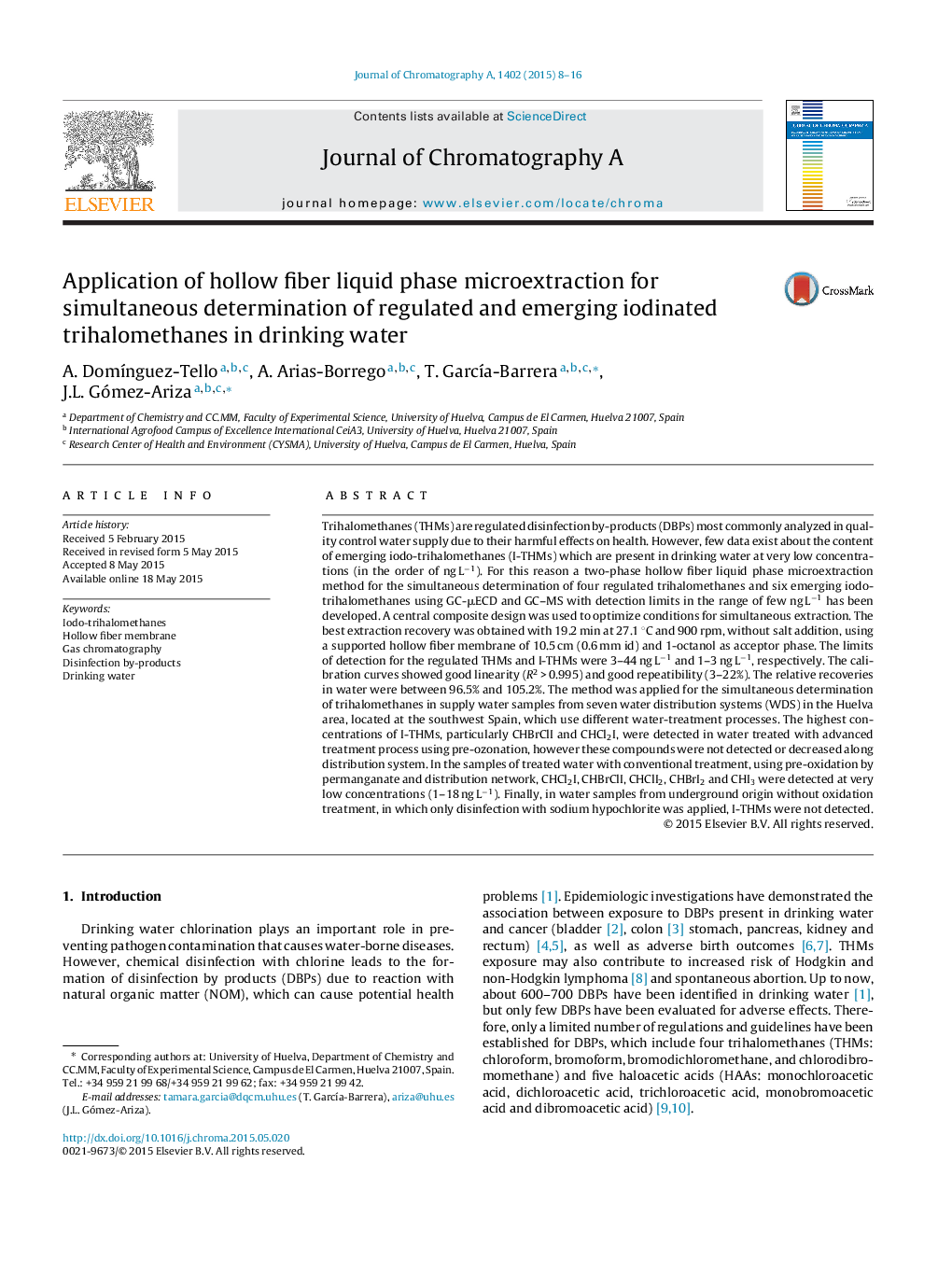| Article ID | Journal | Published Year | Pages | File Type |
|---|---|---|---|---|
| 1198798 | Journal of Chromatography A | 2015 | 9 Pages |
•Simultaneous analysis of 10 THMs using HF-LPME and GC-ECD has been performed.•Concentrations until four orders of magnitude of these THMs can be evaluated.•The method is fast and provides low limits of detection, good linearity and repeatability.•CHBrClI and CHCl2I were detected in WTP with pre-ozonation treatment, but not in WDS.•Five I-THMs at very low concentration were detected in water supply treated with KMnO4.
Trihalomethanes (THMs) are regulated disinfection by-products (DBPs) most commonly analyzed in quality control water supply due to their harmful effects on health. However, few data exist about the content of emerging iodo-trihalomethanes (I-THMs) which are present in drinking water at very low concentrations (in the order of ng L−1). For this reason a two-phase hollow fiber liquid phase microextraction method for the simultaneous determination of four regulated trihalomethanes and six emerging iodo-trihalomethanes using GC-μECD and GC–MS with detection limits in the range of few ng L−1 has been developed. A central composite design was used to optimize conditions for simultaneous extraction. The best extraction recovery was obtained with 19.2 min at 27.1 °C and 900 rpm, without salt addition, using a supported hollow fiber membrane of 10.5 cm (0.6 mm id) and 1-octanol as acceptor phase. The limits of detection for the regulated THMs and I-THMs were 3–44 ng L−1 and 1–3 ng L−1, respectively. The calibration curves showed good linearity (R2 > 0.995) and good repeatibility (3–22%). The relative recoveries in water were between 96.5% and 105.2%. The method was applied for the simultaneous determination of trihalomethanes in supply water samples from seven water distribution systems (WDS) in the Huelva area, located at the southwest Spain, which use different water-treatment processes. The highest concentrations of I-THMs, particularly CHBrClI and CHCl2I, were detected in water treated with advanced treatment process using pre-ozonation, however these compounds were not detected or decreased along distribution system. In the samples of treated water with conventional treatment, using pre-oxidation by permanganate and distribution network, CHCl2I, CHBrClI, CHClI2, CHBrI2 and CHI3 were detected at very low concentrations (1–18 ng L−1). Finally, in water samples from underground origin without oxidation treatment, in which only disinfection with sodium hypochlorite was applied, I-THMs were not detected.
